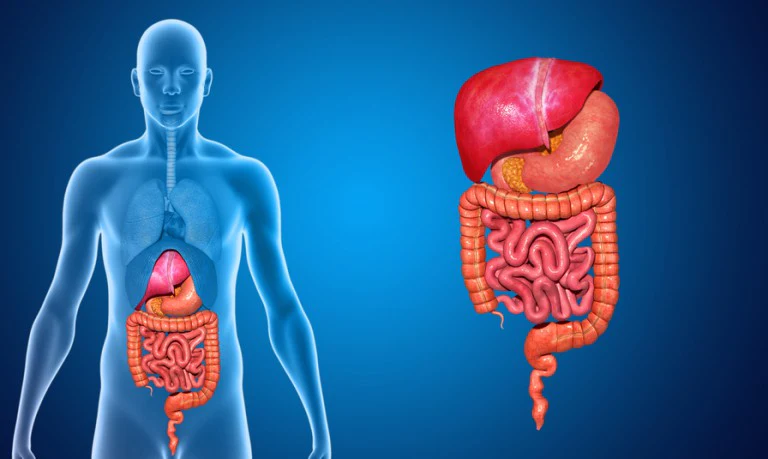Digestion is important for breaking down food into nutrients, which the body will use for energy, growth, and cell repair. The organs of the digestive system are divided into two main groups:
1/ The alimentary canal, also called the gastrointestinal (GI) tract or gut, is the continuous, muscular digestive tube that winds through the body. It digests food—breaks it down into smaller fragments and absorbs the digested fragments through its lining into the blood.
The organs of the alimentary canal are the mouth, pharynx, oesophagus, stomach, small intestine, and large intestine. The large intestine leads to the terminal opening,or anus. In a cadaver, the alimentary canal is approximately 9 m (about 30 ft) long, but in a living person, it is considerably shorter because of its muscle tone.
2/ The accessory digestive organs are the teeth, tongue, gallbladder, and a number of large digestive glands—the salivary glands, liver, and pancreas. The teeth and tongue are in the mouth, or oral cavity, while the digestive glands and gallbladder lie outside the GI tract and connect to it by ducts. The accessory digestive glands produce a variety of secretions that contribute to the breakdown of foodstuffs.

THE DIGESTIVE PROCESSES
The processing of food by the digestive system involves six activities:
ingestion, propulsion, mechanical digestion, chemical digestion, absorption, and defecation:
- Ingestion is simply taking food into the digestive tract, usually via the mouth.
- Propulsion, which moves food through the alimentary canal, includes swallowing, which is initiated voluntarily, and peristalsis, an involuntary process. Peristalsis (peri = around; stalsis = constriction), the major means of propulsion, involves alternate waves of contraction and relaxation of muscles in the organ walls. Its main effect is to squeeze food along the tract, but some mixing occurs as well. In fact, peristaltic waves are so powerful that, once swallowed, food and fluids will reach your stomach even if you stand on your head.
- Mechanical digestion physically prepares food for chemical digestion by enzymes. Mechanical processes include chewing, mixing of food with saliva by the tongue, churning food in the stomach, and segmentation, or rhythmic. local constrictions of the small intestine. Segmentation mixes food with digestive juices and increases the efficiency of absorption by repeatedly moving different parts of the food mass over the intestinal wall.
- Chemical digestion is a series of catabolic steps in which complex food molecules are broken down to their chemical building blocks by enzymes secreted into the lumen of the alimentary canal.Chemical digestion of foodstuffs begins in the mouth and is essentially complete in the small intestine.
- Absorption is the passage of digested end products (plus vitamins, minerals, and water) from the lumen of the GI tract through the mucosal cells by active or passive transport into the blood or lymph. The small intestine is the major absorptive site.
- Defecation eliminates indigestible substances from the body via the anus in the form of feces.

